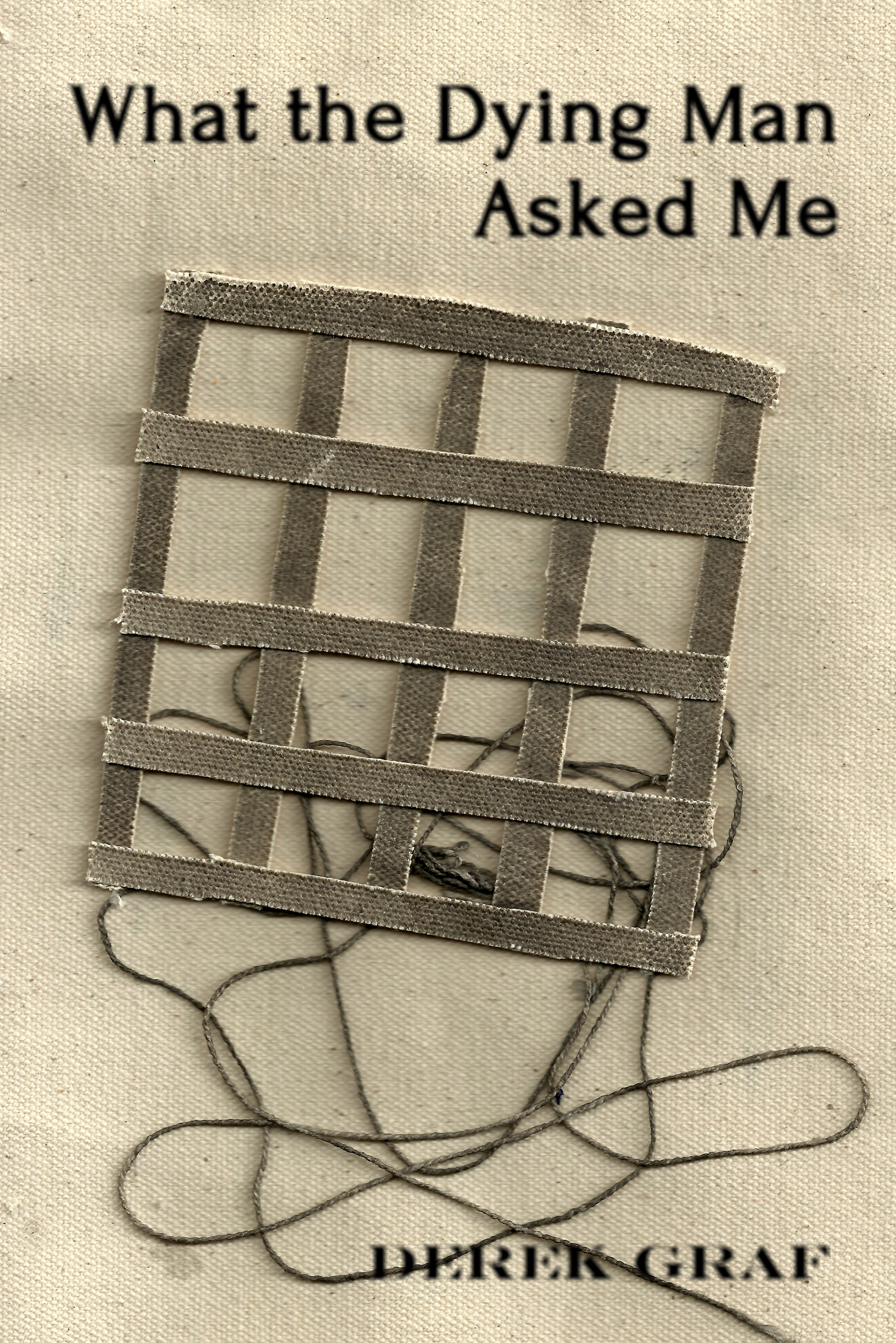What We’re Reading: What the Dying Man Asked Me


What the Dying Man Asked Me by Derek Graf (ELJ Publications, 2015)
Every once in a while, it seems imperative to sit back from the world, just a little bit. In the breath of that recline, what you might discover is the unsepulchered wonder of image and collision. That moment is not unlike Derek Graf’s recent chapbook What the Dying Man Asked Me which echoes the world’s chime of chaos with long lines, impeccable craft, and subtle word play. This publication is an exciting example of the potential for both unity and exploration in chapbook form and also a promising first collection from this rising poet.
The 27 poems in What the Dying Man Asked Me are sequenced with respect to 9 poems which are titled, “My Night as a _____ and a ______.” Beginning with the first poem, “My Night as a Fever and a Wing,” every third poem re-imagines the title with new nouns. All of these poems are epistolary and address a “Father” through couplets. This motif develops a dialogue from the outset of the collection; from the beginning the ‘I’ voice seems determined to confess. This is from “My Night as a Fever and a Wing”:
Father, and I am that shameless color
of wintered blood, a wet animal
walking from the hillside to the street,
and I am a tunnel, a way
out, the cold that drowns
in your teeth and listens, an ill-born.
See how the images bleed into each other? The ‘I’ uses every bit of the body and world around it to depict itself. For this, I would borrow a term for this from the renowned anthropologist, Clifford Geertz—”thick description.” Graf stacks image upon image in his poetry so that each one demands a pause. Yet, at the same time, his deft application of sonic technique allows the reader to appreciate each image in isolation while simultaneously creating harmony with the overall sound of the lines. What’s more, these thick descriptions evoke a certain emotional color, as seen in, “My Night as a Shutter and a Sepal”: “Either the fence or my vision ends / while all the sunflowers in young men are rattled // to nakedness: wide open, like the offered / handshake of your surgeon[…].” Internal, naked sunflowers? That sounds like euphoria to me, but set it up against a handshake with a doctor, and I feel a clammy sense of foreboding, a room lit too well. Throughout the chapbook, Graf juxtaposes images to create emotional tongue-twisters. I don’t think this an “easy” book of poems—the strata and depth of image demand attention and sometimes the friction between the evocative and visual material threatens to lose the reader between lines, but Graf always comes around to scoop us back into the tone and voice of each poem.
In between the “My Night as”-poems is a variety of poetic form and meditative concern, though a similar palate persists throughout the collection. I appreciate the book’s tight focus, recurring obsession with the night, awareness of setting (throughout, we see Florida, Charlotte, Kansas, Oklahoma), and application of formalism. Especially given the brevity of chapbooks in general, the coherence here is especially remarkable in light of the variation in tone and form. It would seem that, at times, the poet is almost absent from the poem; the poet’s eye sits at the border between abstraction and image and roves between the two obsessively. What the Dying Man Asked Me is a plague of intrigue that goes something like this: “It’s time for you to invite me in. I’m as empty as a corner: / the odd man out in a company of clones,” (the first lines of “On Invisibility”).
The final poem, “Pantoum for Cigarettes (Alternate Ending),” might be one of my favorites. Here Graf uses the form to give and then to take away; the repeated lines sometimes build, but often refute earlier versions of themselves. For example:
[…] It’s very hard to figure this out:
a poet named Allison reads my letters and unsigned postcards
from places where I drink too much and forget my hands—
she writes about Russia with big Russian words
and secretly opens my drunken letters, although—
I should have said—she also censors my drunken letters.
She writes Russian poems with tiny Russian words
and colors the night with paint that I can’t see, and as I said—
what am I saying?—she never reads my drunken letters,
Again, we see here a version of playfulness with language. The poet plays with the repetition to create a smoke-and-mirror effect where meaning, and the speaker’s intent, shift like a mirage. In my opinion, this is a successful exploitation of the pantoum’s cheeky potential. This poem is about what is said and not said, authorship and lies… and it makes me think of the slow burn of the future ever-coming toward the face but never burning through the filter of the present.
This poem also makes for a strong final move in the collection. Many a creative writing teacher has said the last lines of a poem should be “an opening up,” and that’s exactly what I see happening in “Pantoum for Cigarettes.” Graf calls out the constant becoming of his craft: “I’ll always write you letters / with my static hands but I’m still working out the lines / to “It Looks Like We’re in Love again,” and “How This Burns.” I read this as a promise to a lover but also to a reader—maybe “Allison,” perhaps a cigarette, maybe me. In any case, it would seem that the final poem of What the Dying Man Asked Me is just the beginning of what’s sure to be more promising work from Derek Graf.






Comments are closed.